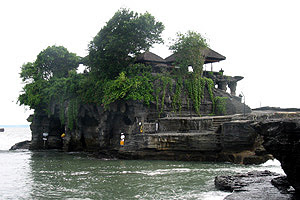The DaVinci Code
5 BIG QUESTIONS
from The DaVinci Code
A brief guide by Christianity Today magazine editor Collin Hansen
Already an international publishing sensation, The Da Vinci Code now is a feature film directed by Ron Howard
and starring Tom Hanks. The compelling story written by Dan Brown blurs the line between fact and fiction,
so moviegoers have joined readers wondering about the origins and legitimacy of orthodox Christianity.
This guide
offers brief answers to five important questions.
1. Was Jesus married to Mary Magdalene?
No. Mary Magdalene was certainly close to Jesus. She wept at Jesus’ tomb (John 20). Jesus even entrusted her to
return and tell the disciples about his resurrection. But we have no reason to believe they were married. Brown says that
Leonardo da Vinci’s Last Supper reveals the secret. He writes that the figure to Jesus’ right, traditionally known as the
apostle John, is actually Mary. Not true. Artists often gave characters feminine features to portray youth. John was the
youngest of the disciples.
Brown correctly observes that few Jewish men of Jesus’ day did not marry. But why, then, did the apostle Paul,
himself celibate, not mention Jesus and Mary when he argued that apostles could marry (1 Cor. 9:5)?
2. What about these alternative gospels that aren’t in the New Testament?
It’s true that the Bible did not arrive as a “fax from heaven,” as Brown writes. The New Testament canon in its
current form was first formally attested in 367. Nevertheless, church leaders applied important standards when
compiling the Bible. Authors of accepted writings needed to have walked and talked with Jesus, or at least with his
leading disciples. Their teaching could not contradict what other apostles had written, and their documents must have
been accepted by the entire church, from
more credible than later documents. Finally, they prayed and trusted the Holy Spirit to guide their decisions.
The so-called Gnostic gospels, many discovered just last century, did not meet these criteria. Many appeared much
later than the Bible and were dubiously attributed to major Christian leaders. Their teachings contrasted with what
apostles like Paul had written. For example, many Gnostic writings argued that Jesus did not appear in the flesh,
because flesh is evil, or they rejected the Old Testament.
3. Were there really competing Christianities during the early church?
Yes—in the sense there were many disputes about the nature of Jesus. And the church has done its best to vanquish
challengers to orthodoxy. Once the church decided against the Gnostic writings, they gathered and burned all the
Gnostic manuscripts they could find.
Later church councils convened to discuss other threats to Christian orthodoxy. Constantine, the first Roman emperor
to make Christianity legal, called the most important of these meetings in 325. Leaders from around the Christian world
gathered in Nicea, where they debated Arianism, which taught that God created Jesus. Brown writes that
called this council so he could introduce a new divine Jesus on par with the Father. On the contrary, documents from
before Nicea show that most followers of Jesus already called him Lord, the Yahweh of the Old Testament. The church
leaders at Nicea rejected Arianism and affirmed that God and Jesus existed together from the beginning in the Trinity.
This council produced the first drafts of what became the Nicene Creed, a landmark explanation of Christian belief.
4. What is Opus Dei?
A conservative religious group within the Roman Catholic Church. Opus Dei urges priests and laypeople to
strenuously pursue sanctification through everyday discipline. The group has taken criticism for its conservative
views, zeal, and secretive practices. There is no evidence that Opus Dei has resorted to murder; nor has the
entrusted Opus Dei to violently guard the church’s deepest secrets, as Dan Brown claims in The Da Vinci Code.
5. Does the Priory of Sion really exist?
Yes, but not as described by Brown. Researchers suspect that members of the real-life Priory of Sion, founded
in 1956, forged documents that placed major historical figures—such as Isaac Newton and Leonard da Vinci—in an
ancient secret society. There is no evidence for this group beyond dubious documents. Any story relating this group to
a dynasty begun by Jesus and Mary Magdalene is a fanciful work of fiction.
—Collin Hansen is associate editor of Christianity Today (www.christianitytoday.com).
For more Christianity Today coverage, visit www.ChristianityToday.com/go/DaVinci
A
5 BIG QUESTIONS
from The DaVinci Code
A brief guide by Christianity Today magazine editor Collin Hansen
Labels: The DaVinci Code










